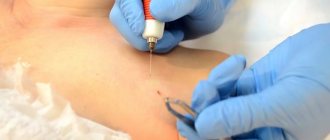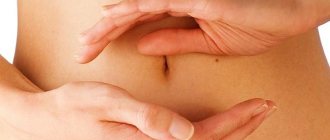After a properly performed operation to remove a nevus, usually after a few months there are no traces left on the skin. In very rare cases, complications are possible, which, with proper treatment, can also be eliminated through qualified treatment or laser resurfacing.
It is important! To avoid negative consequences, you should entrust the operation to highly qualified specialists and contact only a specialized clinic. It is unacceptable to remove nevi in beauty salons.
What do we know about moles?
What we have always heard about moles: “Does it bother you? Live in peace, don’t touch your mole!” This advice, which was very common in the past, convinced us that moles that were originally given by nature or that appear over the years should remain inviolable. If you touch it, you won’t be able to avoid trouble. This is partly true - indeed, removing moles can lead to the most dire consequences. But in fairness, it should also be noted that not every mole needs to be removed. The most harmless - flat moles
(pink to dark brown).
Usually they behave “quietly”, do not get injured and do not create inconvenience. The only thing you need to remember is to protect such moles (on open areas of the body) from sunlight. Convex moles
, especially if they are often touched by clothing, need to be treated more carefully. If they are on the back and in other places inaccessible to your view, you should entrust someone close to you with monitoring them. And, of course, if any changes occur—the mole becomes larger, turns from flat to convex, or changes its shape—you should immediately contact a specialist.
How to treat a scar
Treatment before the process of removing moles using one of the surgical methods and care after surgery are mandatory components of preventing the development of negative reactions. If there is pain in the scar area, you can use medications:
- antiseptics to relieve discomfort, eliminate secondary microflora - brilliant green, alcohol, iodine solution, Betadine, Miramistin, Chlorhexidine bigluconate;
- dyes with a drying effect to stimulate epithelization, eliminate a weeping wound, and rapid healing - Fukortsin, Castellani paint;
- ointments that relieve inflammation - Levomekol, Solcoseryl, Streptomycin, Baneocin, Betamentasone, ointments with Panthenol;
- ointments and creams that stimulate suture contraction and skin regeneration after surgery - Kontraktubes, Mederma;
- natural oils, herbal decoctions for rubbing and relieving pain - milk thistle oil, sea buckthorn, St. John's wort, aloe;
- Actovegin - stimulates regeneration at the cellular level.
No independence.
Some people believe that you can remove moles yourself by tying them, for example, with silk thread. This is a deep misconception. Attempts to bandage warts and papillomas with a thin silk thread often only provoke the growth of these formations. Today, there are celandine-based preparations on sale that are intended to eliminate warts. But it is better not to remove moles, papillomas, or warts yourself by any means. Celandine juice is similar in composition to iodine, so prolonged exposure to the drug causes skin burns. Cauterization with iodine is even more dangerous - it is more aggressive than celandine. Trying hard to get rid of papillomas with iodine, you can get scars on the skin. Only a dermatologist can properly remove a mole.
Treatment of postoperative scars
Postoperative lumps are difficult to treat. Getting rid of a scar or scar will require patience and time . It is better to monitor the condition of the wound in the first months after the operation than to get rid of the consequences afterwards.
To eliminate a cosmetic defect, which is a scar, a specialist may prescribe:
- Drug therapy with the use of immunostimulants and corticosteroids that affect collagen formation;
- Use of pressure bandages with special ointments or silicone patches;
- Carrying out cosmetic surgery in the presence of a tubercle, scar or keloid scar (laser resurfacing, re-operation).
Removal methods.
Removal of moles and warts
- Cost: 2,000 rub.
More details
Mole removal can be carried out using a laser, radio wave coagulation or electrical coagulation. These manipulations are performed on an outpatient basis under local anesthesia. The choice of treatment method is determined by the doctor in each specific case. In my opinion, the most effective and painless method is radio wave coagulation. We use this technique in most cases, although in some cases we use excision with conventional surgical instruments followed by suturing. When using radio wave coagulation, tissue damage during material collection will be minimal, blood loss is reduced, and the rehabilitation period is shortened, while, for example, with the laser method, the healing process is extended over a fairly long period. Repeated formations do not appear after removal, but if precautions are not followed by the patient himself, infection may occur.
Why did it appear again?
The main reason for the reappearance of a mole after removal lies in the insufficient quality of surgical intervention. If a previously existing nevus was not completely removed, part of its cells (a microscopic fraction is enough) will remain in the skin, and after some time will begin to produce brown pigment.
However, some doctors claim that even when a mole is removed, including a significant amount of healthy surrounding tissue, there is a risk of relapse. In this case, it is not yet possible to determine its causes.
Unattended moles.
Some types of moles can degenerate into one of the most malignant tumors - melanoma (skin cancer). The initial site of formation of most melanomas is congenital pigment spots and warty moles. How does this dangerous development begin?
For example, after damage, a person only notices how the color of the mole begins to change, it enlarges, cracks, turns into an ulcer, and sometimes into a tumor. Therefore, without panicking, pay attention to the above symptoms, especially the progressive enlargement of the mole and change in its color. If all these symptoms occur, immediately rush to the dermatologist. The unfavorable prognosis of melanoma dictates the need for regular monitoring by a doctor. In addition to irritant factors (ultraviolet radiation, trauma), the development of melanoma can also be caused by genetic and endocrine factors. However, in the first place is, of course, excessive exposure to the sun. Ultraviolet radiation in large doses causes irreversible changes in skin cells, greatly increasing the risk of their degeneration. Light-skinned and fair-haired, red-haired people with blue and gray eyes are most susceptible to the mutagenic effects of sunlight. Those at risk also include those who have a lot of freckles, age spots and moles.
Should you see a doctor with these symptoms?
If deviations appear after removing a mole, atypical symptoms, pain, even if the symptoms stop spontaneously, it is recommended to consult a doctor to avoid complications.
It is necessary to pay attention to acute symptoms. If certain signs appear, you should immediately contact the dermatology department:
- atypical discharge from the wound - blood, pus, serous clear liquid - one-time or constant;
- raising body temperature to 39-40 degrees. Prolonged hyperemia, which is poorly treated with antipyretics and NSAIDs;
- acute and throbbing pain, difficult to relieve with medications. Taking ibuprofen or aspirin should be avoided: they increase the risk of bleeding from a postoperative wound.
The doctor will determine the nature of the changes, conduct diagnostics, and help differentiate pathological symptoms from normal processes of epithelization of the postoperative wound. If necessary, he will prescribe additional biochemical tests or histological examination of tissue from the surgical area.
Dangerous sun.
For each person, the critical duration of exposure to sunlight is highly individual. It’s not easy to determine this line, so it’s better to just remember that prolonged exposure to the sun is harmful to the body. The skin is forced to protect itself from ultraviolet radiation. Excessive tanning means inevitable burns. If you love beach holidays so much that you simply cannot deny yourself this pleasure, at least listen to the following tips. By following these simple recommendations, you will not only improve your health, but also reduce the risk of a dangerous disease.
- Staying in the sun is safe from morning until 10 o'clock, in the evening after 17 o'clock.
- For people with a large number of moles, it is better to reduce their exposure to the sun.
- Try to avoid redness and sunburn on your skin. If this happens, spend 2-3 days in the shade.
- After swimming in the sea, be sure to rinse your skin with fresh water.
- Even young and healthy people can spend no more than one and a half to two hours a day in the sun.
- Taking certain medications increases the skin's sensitivity to light. Please consult your GP before going on holiday.
- Use sunscreen cosmetics: at the beginning of the holiday, the indicator should be maximum, about 40 units.
- Do not use decorative cosmetics, deodorants and perfumes on the beach - they can cause the appearance of age spots on the skin.
How to behave after surgery
Often after the operation and subsequent care in the postoperative period, no complications arise, but at the same time, the occurrence of various uncomfortable sensations and complications in the form of inflammation is absolutely not uncommon. That is why proper wound care after surgery is required no less than before and during it. Strictly following your doctor's recommendations is an excellent way to prevent negative consequences that may be caused by surgery.
Itching is one of the most common types of discomfort that occurs in almost every patient who has undergone surgery to remove a nevus.
A wound can itch for several reasons, and they can be completely safe and natural, or they can pose a certain threat, being a sign of complications and all sorts of negative processes.
In the first case, the mark from the mole itches due to the fact that the wound is healing, and the growth of new tissue is accompanied by processes that manifest themselves in the form of itching. This is quite normal, so nothing is required other than the use of special creams that help soothe the skin.
Causes of itching
There are many circumstances contributing to the appearance of itching after surgery.
The main factors why a scar itches are:
- tissue regeneration in the first 3 weeks after surgery: removal of a mole, abdominal and thoracic surgery, delivery - Caesarean section, when adding fragments in fractures and others;
- dry skin with characteristic dryness, peeling and itching;
- after surgical interventions on the uterus. Part of the endometrium can get into the scar, which subsequently, according to the menstrual cycle, rejects the endothelium. Redness, pain appears, and the scar itches;
- wearing synthetic, woolen or other clothing made from coarse fabric. A tight, tight-fitting item irritates an old scar;
- careless removal of external sutures, so part of the surgical thread may remain in the wound, with the subsequent development of edema and suppuration of the skin;
- degeneration of the scar into a rough keloid scar, which can subsequently increase in size;
- Certain types of therapy provoke itching of the scar area, the use of Contractubex is an example of this. This is provided by the manufacturer and is considered a normal response of the body. Contractubex is a gel for application to wounds, ulcers, and fresh scars. Has an anti-inflammatory, softening and smoothing effect.











